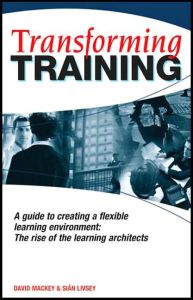Join getAbstract to access the summary!

Join getAbstract to access the summary!
David Mackey and Sian Livsey
Transforming Training
A Guide to Creating a Flexible Learning Environment: The Rise of the Learning Architects
Kogan Page, 2006
What's inside?
You may think you're a trainer, but you're really a "learning architect," responsible for aligning education and strategy.
Recommendation
This exhaustively detailed book reports on how to create a successful workplace learning program, and explains the challenges corporate trainers face. It provides a step-by-step plan to develop a learning environment flexible enough to meet the ever-changing needs of the company and the individuals within it. Some U.S. readers may need to familiarize themselves with U.K. abbreviations they may not have seen before, such as NVQ (National Vocational Qualifications) and CIPD (Chartered Institute of Personnel and Development). A tendency toward dense jargon is outweighed by the book's numerous assets – a wide compilation of best practices, useful checklists, illustrative case histories, insightful suggestions and proven recommendations. getAbstract considers this book a valuable guide for anyone charged with planning, setting up and implementing a corporate training or learning program.
Summary
About the Authors
David Mackey and Siân Livsey are independent business trainers and coaches who have assisted numerous corporations in planning, organizing and implementing their workplace learning programs.

















Comment on this summary